How Stupid Is Your Daily Paper?
by Jamie Moses
A well-known Buffalo businessman friend has repeatedly claimed the biggest reason for Buffalo’s decline is the Buffalo News. That seems quite unlikely, but then again, maybe he’s right. It’s certainly true the newspaper has regularly sucked over $50 million a year in profits out of our economy and sent it off to Omaha to fatten Warren Buffett’s wallet. It’s a remarkable testament to our own foolishness that the News has been able to continually realize such obscene profits. Consider, that when Artvoice started in 1990 the Buffalo News daily circulation was 315,732 and today it’s fallen to only 194,225—but their profits have increased. How could they produce so much less and yet still earn so much money? Simple, if you print half as many papers, charge twice as much. They doubled the price of the paper and raised advertising rates 88 percent over this period.
But it is not the profitability of the Buffalo News that should irk us. Rather, it is the fact that in a one-newspaper town they have such a loud voice and they are always leading us to destruction. As far back as you care to look, the Buffalo News has been on the wrong side of every important decision in this city. I read a News article from decades ago titled “The Destroyers” where they lionized the men who demolished Frank Lloyd Wright’s fabulous Larkin office building, as well as many other of Buffalo’s key architectural gems. They fought for putting the UB campus in Amherst. The News supported the pedestrian mall on Main St., which contributed to the closure of every major downtown store. They supported the rapid transit system. They supported building the Main Place Mall and the Convention Center, which effectively destroyed the beauty and genius of Joseph Ellicott’s radial street design of the city-and pretty much destroyed any hope of healthy downtown traffic flow. They supported Mark Hamister’s ridiculous bid to purchase the Buffalo Sabres and in one outrageous editorial said “B. Thomas Golisano should go away.” They supported closing libraries. The list goes on and on, and yet through all this blundering, the Buffalo News delivers patronizing editorials that arrogantly tell their “inferior-minded” readers what they should think, what they should do.
After endorsing Kevin Helfer, the recent Republican candidate for mayor, the Buffalo News immediately began telling mayor-elect Byron Brown what he MUST do—because of course mayor Brown would never be able to figure out his job on his own. I would suggest what he must do is ignore the Buffalo News.
What has inspired this diatribe from me against our lousy daily paper was their editorial attack yesterday (1/2/06) on the Niagara Frontier Transportation Authority’s plan to invest $23 million in the Niagara Falls International Airport. Here again, it’s important to remember that the Buffalo News fought tooth and nail to give the Niagara Falls Airport over to some fraudulent company from Spain for 99 years for a measly $10 million, including a whopping $250,000 to market the airport internationally. That kind of chump change is less than half of what Grand Island car dealer Billy Fucillo spends to plaster his big ass all over Buffalo’s busses.
Let’s look at this fabulous piece of recent Buffalo News editorial wisdom:
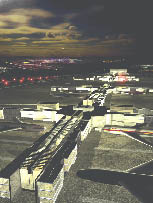
“PUT THE FALLS TERMINAL ON HOLD
“It’s hard to imagine a more ill-considered decision than the Niagara Frontier Transportation Authority’s push to spend $24 billion (sic) of hard-earned taxpayer dollars on a Niagara Falls airport terminal that shows every indication of getting somewhere between little or no use at all.
“The NFTA has yet to do the needed comprehensive and objective marketing study that could make or break the case for a new terminal. Instead, it relies only on a “build it and they will come” plan. That’s not enough for a major capital outlay in a region that has other pressing needs for public money.
“We’d love to see a thriving new terminal, but the history of trying to make the Niagara Falls airport work is one of constant failure….
“…Why count on Niagara’s longer runways being able to handle jumbo charter jets, when no new charters of any size aircraft have been lured to the airport?
“If the NFTA thinks it has a good idea, then it needs to go about proving it without adding another $23 million to the $1 million it already has spent on concept and design work. That added expense, so far unsupported by any real signings or market analysis, could threaten improvements at the Buffalo Niagara International Airport, which already adequately serves this region including, only minutes farther than Buffalo, the tourist mecca of Niagara Falls.
“It’s time for Mary Martino, the acting head of the NFTA who wants to be permanently appointed, to put staff activity for this terminal on hold until she commissions a truly objective market study and NFTA management produces signed commitments from bona fide carriers that would make this project economically viable.”
Actually, we think it’s time for Mary Martino to tell the Buffalo News to fuck off. The history of Niagara Falls International Airport is not failure, it’s a history of lack of funding. If the NFTA should be faulted for anything, it is that they are still thinking too small. They should be trying to invest $230 million, not $23 million. The Niagara Falls Airport is the equivalent of Buffalo’s waterfront in terms of development, only much greater. Since the NFTA acquired the airport in 1969 the poor thing has languished and decayed with only little dribbles of cash to keep it on life support.
The Buffalo News January 2 editorial lambasting the NFTA followed a December 27, 2005 article in which NFTA Executive director Lawrence Meckler announced the $23 million plan for a new terminal and other improvements at the airport. The News, predictably enough, wrote:
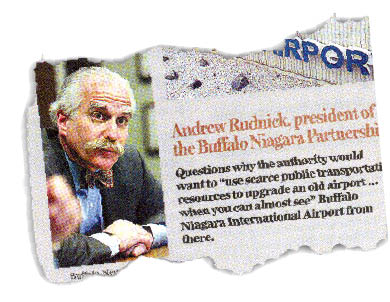
“Andrew J. Rudnick, president of the Buffalo Niagara Partnership, questions why the authority would want to ‘use scarce public transportation resources to upgrade an old airport for scheduled passenger service when you can almost see’ Buffalo Niagara International Airport, the region’s main air hub, from there.”
An old airport? This guy has an imagination you could fit into a peanut shell. How long must we listen to the Buffalo News quoting Rudnick’s opinions? Congressman Brian Higgins said it best a few months ago, “Rudnick is irrelevant.” What will it take for Buffalo News publisher Stan Lipsey and M&T Bank president Robert Wilmers to cut this guy loose?
Maybe if the Buffalo News and Andrew Rudnick would pull their heads out their butts they could see more clearly. Here are the facts: The world is shrinking. International air traffic is increasing exponentially—both cargo and passenger traffic. Previously impoverished nations with populations exceeding a billion people, like China and India, are making big money, are on the move, and want to travel and expand their business. Europe, which through the European Union is organized more like a single nation, has a half-billion people, hundreds of thousands of expanding businesses and a growing tourist population. There is very little room for expansion in our already congested major U.S. airports.
The so-called Buffalo International Airport is really just a faux international airport. There is no place you can fly to from Buffalo that I can’t drive to in my car. That is NOT international (I’m sorry, but in my opinion Toronto and Montreal just don’t count as legitimate international travel). Buffalo will NEVER be an international airport because it can’t handle the big jumbo jets. But Niagara Falls International Airport can!

AIRBUS CALLING
You want to talk about jumbo jets? Here is an interesting excerpt from T.R. Reid’s recent book The United States of Europe:
“Airbus Industrie [the world’s largest aircraft manufacturing company, after surpassing Boeing in 2003] is now building a product so big it won’t even fit at most airports. Europe’s builder of commercial jetliners has essentially bet its future on the biggest passenger plane ever built, the new A380. This behemoth of the air will hold more than 550 seats (up to 600, in fact, on charter airlines that don’t mind squeezing their customers sardine-style) arranged on two decks both running the full length of the fuselage, with elevators, restaurants, and movie theaters inside the plane. The plane is so big that Airbus has agreed to help fund the enlargement of airports around the world so that they can handle A380 operations. At most airports, the new airplane will stretch over three boarding gates, and passengers will be distributed among the three in hope that the giant jet can be loaded and unloaded as fast as normal aircraft…
“Singapore Airlines, the first customer to sign up, promised to start transpacific A380 service in 2005—
“All this investment in a huge new model is a daring move, unmatched in the industry since Boeing bet the company on the 747 in the 1960s. But the gamble seems likely to pay off. Two years before the first plane was to be delivered, Airbus had contracts for more than half of the break-even number, a good omen for a new model in the aircraft business.”
Okay, let’s look at a key sentence in that passage: “The plane is so big that Airbus has agreed to help fund the enlargement of airports around the world so that they can handle A380 operations.”
In February of 2005 congresswoman Slaughter was in discussions with Airbus about opening manufacturing operations in Niagara Falls to build fuselages for the A380. That didn’t pan out, but what about passenger service for the plane?
During a recent conversation with an aide to Senator Clinton I was told Clinton and Airbus had several discussions about bringing service to Niagara Falls. Apparently, Niagara Falls Airport was on the table and being considered. It was subsequently pulled from the table but the aide was not sure why. Let’s get it back on the table. If Airbus is willing to invest, and the NFTA is willing to invest $23 million, and a few other investors can be brought on board, why couldn’t it happen? Many major international carriers have invested in the airports that they use as hubs, such as Qantas, BAX (a cargo carrier) and others.
Also, think about the announced first customer for Airbus, Singapore. Think about Oasis Hong Kong Airlines, established in February 2005, which is a new budget airline based in Hong Kong, with its hub at the Hong Kong International Airport. It will commence service in long-haul passenger flights between Hong Kong and Europe, and between Hong Kong and United States in early 2006, with Boeing 747-400 aircraft. On Monday Oasis announced $128 round trip flights from London to China beginning in June and expects to add flights to Chicago and Berkeley this year, as well.
Think about Qantas Airlines, which is also going to begin long-haul budget flights from Asia and Australia, to Europe and the U.S.
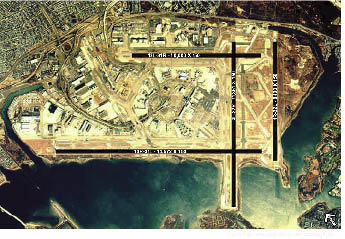
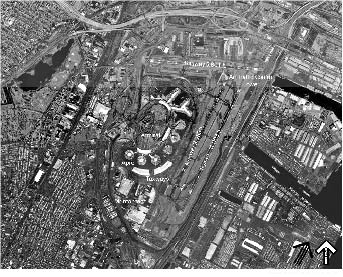
CHINA CALLING
In October I was traveling in China with my family. All the Chinese people we spoke to say they wanted to travel, and more and more of them can afford to do it.
The airline industry in America has been struggling just to survive. That’s not the case in China. In China every flight, both international and domestic, is full. While we were there China announced they were adding five new routes to the Europe and the United States to try and meet the growing demand for travel to and from China. But most of those U.S. flights go to the Pacific coast. There are nine carriers offering direct flights to China from either Los Angeles or San Francisco. Only two companies offer direct flights to the East Coast, Air China to JFK and Continental to Newark. YET THE DISTANCE TO BEIJING IS ABOUT THE SAME FROM EITHER COAST! Why aren’t there more direct flights being offered to a country that is sitting on a surplus of a trillion U.S. dollars and a population of over a billion people who want desperately to travel AND an export economy that keeps growing and growing and growing?
I talked to the pilot of our plane after we de-boarded on the way home from China and he told me there was no more air space left in New York. He said flights are already backed up at Newark, LaGuardia and JFK, and the congestion is getting worse. “There’s just no more air space in the Northeast. Half the time when your flight is late it’s because we’re circling the airport waiting to be allowed to land.” Really? We sure have air space here in WNY.
How about NFTA focuses on reaching out to the federal government in Washington, Air China and other international passenger carriers about turning the Niagara Falls Airport into a new direct route from WNY to Beijing?
In the case of both East Coast routes, especially Continental’s out of Newark, the direct flight has been a boon to business. One article, published on newyorkbusiness.com, claimed that Asian businesses were establishing offices in New Jersey, simply because the new route made it convenient for them. Non-stop overseas routes generate thousands of new passengers. One expert put the number at over 150,000 passengers per year per route. Delta, in a bid to launch non-stop flights between Atlanta and Beijing, estimated that such a route would have a $400 million annual impact on the Southeast economy. Businessmen and travelers from Buffalo, Toronto, Montreal, Pittsburgh and Cleveland could fly out of Buffalo and be in Beijing in 13 hassle-free hours.
And cargo? How about NFTA also reaches out specifically to Chinese and other Asian air cargo companies and interest them in a new direct route from Beijing to the Niagara Falls Airport in New York? We’re never going to be a manufacturing center again, but we were once a mighty distribution center and that is something that we could repeat.
Niagara Falls Airport and Buffalo are centrally located between the major population centers of the Northeast and Midwest, making us a natural cargo distribution hub. Buffalo is within 500 miles of more than a dozen major cities, including New York, Boston, Toronto, Montreal, Ottawa, Baltimore, Philadelphia, Pittsburgh, Cleveland, Chicago, Detroit, Cincinnati, Indianapolis and Washington, DC, to name a few. Do an experiment. Draw a circle on a map around all the above named cities and then drop your pencil right in the center of that circle. It’s Buffalo!
Currently, most of the Chinese airfreight to the East Coast flies into the overburdened Newark-New York hub and is distributed from there. Okay. Why not have some of those planes fly into Buffalo International? Well, because the airport’s landing strip isn’t long enough, for one.
But the NFTA-owned Niagara Falls Airport has the fourth longest runway in New York State. With a runway almost two miles long there is plenty of room to accommodate the trans-oceanic planes that are too big for Buffalo—747s, 777s and the new Airbus A380. An added bonus is that Buffalo is actually 200 miles closer to Beijing than New York, allowing planes to pack more cargo and less fuel. The highways, railroads and air space are less crowded in WNY, allowing goods to be processed and delivered more quickly and cheaper than in the downstate area. JFK and Newark are so congested that shipping goods on from those hubs often costs more than the price of shipping them from China.
If such business could be brought in to Niagara Falls, it would benefit more than just cargo companies. There would be jobs fueling and servicing the airplanes, staffing the airport and conducting other support services.
With the right incentives (including the nonstop flight), Chinese businesses would relocate to WNY. Also, a regular nonstop passenger service could help lure Chinese students to study at our universities, and could attract immigrants. Enough immigrants could mean a Chinatown in Buffalo, particularly if the city or a newly formed nonprofit organization purchases buildings and properties and offers incentives to Asian immigrants in a specific neighborhood.
That would be a genuine tourist attraction that would add character and color to the city. There are Chinatowns in San Francisco, Toronto, Boston, New York, Seattle, Montreal, Portland, Las Vegas, Vancouver and Philadelphia. These are all booming tourist attractions and thriving businesses. And unlike Delphi or Bethlehem Steel, you don’t face some sudden announcement one morning that “Chinatown is closing.”

EUROPE CALLING
But it is not just China and Asia and India, etc. that hold promise. Whether we recognize it or not, Europe is looming larger and larger on the world stage and its investments and interests in the United States are increasing at a phenomenal rate.
There was another interesting chapter in Reid’s The United States of Europe. The chapter details a spontaneous weekend trip taken by a typical American couple from Syracuse, NY. They borrow a few bucks, gas up the car and hit the road for a drive to Chicago to visit their son and his wife. Everything they buy, eat, drink, and where they sleep is mentioned. All the brands mentioned in the chapter sound familiarly American, but every single one is actually owned by Europeans. Without going through the entire story, here is a list of brands mentioned in the chapter and their country of ownership:
Jeep – German; Amoco – British; Texaco – Dutch; Dunkin’ Donuts – British; Slim Fast – Dutch/British; Baby Ruth candy bar – Swiss; Alpo dog food – Swiss; Snapple – British; Holiday Inn - British; Miller Lite beer – British; Bazooka gum – British; A&W Root Beer – British; Verizon cell phone – British; Ray-Ban sunglasses – Italian; Brooks Brothers clothes – Italian; Lean Cuisine – Swiss; Ben & Jerry’s ice cream – Dutch/British; Stop & Shop – Dutch; Dr. Pepper – British; Niagara Mohawk electric company – British; Casual Corner clothing – Italian; Dial soap – German; Chicago Sun-Times newspaper – British; DKNY – France; Archway Cookies – Italian; Hellman’s Mayonnaise - Dutch; Taster’s Choice coffee – Swiss; Plymouth, Dodge and Chrysler – German; Dove soap – Dutch; New York Post – British. And so on.
The point is Europe and the rest of the world are very busy growing, expanding, consuming, increasing their networks. We have to stop thinking in such an isolated and small way. We have to stop thinking that we’re fine with our little airport out there in Cheektowaga. The rapid growth of world interaction is not a fad anymore than the Internet is a fad. It’s only going to grow faster, and we need to be ready.
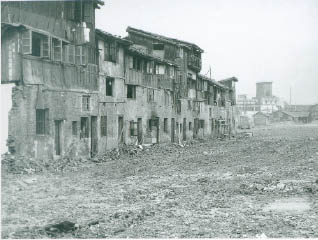
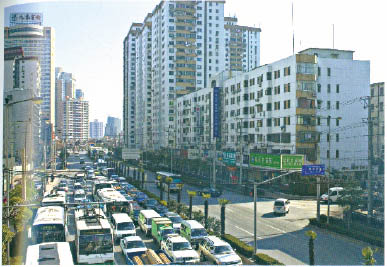
HOW ABOUT A STUDY?
The Buffalo News called for the NFTA to do a study before committing to any spending. Did anyone at the News bother to discover how many studies have already been done since 1969? I know of a couple. There was an expansive “Master Plan ” drawn up in 1982. That study and plan went nowhere. The 1982 Master Plan was then turned into an “updated Master Plan” in 1993. That plan also went nowhere. Does this sound familiar? Like waterfront development, maybe? Plans without cash are meaningless. As they say, money talks. If the Buffalo News wants a study let Warren Buffett pay for it. Meanwhile, can we get on with real life?
In 2003, businessman Richard Taylor sponsored an ambitious project with the Architecture Department of the State University of New York at Buffalo. UB Assistant Professor and architect Brad Wales led a senior design studio in a study and redesign of Niagara Falls International Airport.
Twenty-three airports around the world from Memphis to Hong Kong to Tokyo, Amsterdam, Newark, Bangkok, Atlanta, Indianapolis, Paris and more, were analyzed, recorded, compared and presented in a 209-page report (also available on four CDs, complete with photos and graphs). The group studied the relationships between runways, taxiways, warehousing, and terminals. They also looked at the relationships between Air Cargo Facilities and surrounding roadways and other forms of transport such as by sea or train. They studied Airport Design Standards including the widths and lengths of runways, setback ratios to buildings, and runway protection zones (RPZs) at the ends of runways.
Professor Wales and his group of architectural grad students came up with a good deal of primary research that was applied directly to the decision-making process during design; for example, the Land Area Comparison Overlays indicated the NFIA is undersized if the goal is to maximize development potential as a North American hub. So they detailed logical expansion plans, taking into account the surrounding community, existing road usage, the proximity of the airport to the city of Niagara Falls and how to integrate the airport and the city, etc.
They also considered the possible local financial implications of their designs. Newark Airport, for example, generates as much as $18 billion in annual direct and spin-off economic activity. Financial infusions such as this would create a tremendous amount of new construction, so professor Wales and his group tried to include some guidance for future development. Their plan even included the reuse of existing under-used facilities such as the Summit Park Mall.
Obviously, I am not going to attempt to restate a 209-page architectural report in a few paragraphs. But in short, what they achieved was a thoughtful plan for developing the Niagara Falls Airport over the next 50 years. They were also wise enough to include Plan A, which presumed the Air Force Base would not be there, and a Plan B, which included development alongside the Air Force Base. (If anyone is interested, I have three bound copies of the full report.)
My question is whether anyone at the NFTA has even seen or heard of this project? It’s clear none of the all-knowing priests of doom at the Buffalo News know about it.
The bottom line is that just as with the Buffalo Waterfront, the Niagara Falls Airport’s time has come. It is here at hand. If nothing happens out there it will be because we failed to sell it properly, because we failed to find good leadership, because, as has happened so many times before, we failed to recognize our own assetts. Certainly there are hurdles, regulatory guidelines, homeland security, customs, border protection, etc. But we must find a way to overcome the obstacles. The land is cheap, the location is prime, the customs clearance is fast, the runway is available, the growth potential is unlimited. And the international demand is swelling. What more can you ask for?
In conclusion, let me just say how thankful I am that I don’t have to depend on writing a letter to the editor when the Buffalo News aggravates me. I have Artvoice in which to rant, and I thank those of you who indulged me by reading this article. (And I invite you to send us your own rants.)
To explain the Buffalo News reading experience, the Wikipedia definition of waterboarding is probably the best description you will find anywhere:
“In the medieval form of waterboarding, a victim was strapped to a board and lowered into a body of water, believing that drowning was imminent. The psychological effect is that the victim is led to believe that he or she is being executed. This reinforces the interrogator’s control and makes the victim experience mortal fear.”
Don’t be afraid. It’s only the boogey man.
|
Issue Navigation> Issue Index > v5n1: How Stupid is Your Daily Paper? (1/5/06) > How Stupid Is Your Daily Paper? This Week's Issue • Artvoice Daily • Artvoice TV • Events Calendar • Classifieds |









 Current Issue
Current Issue